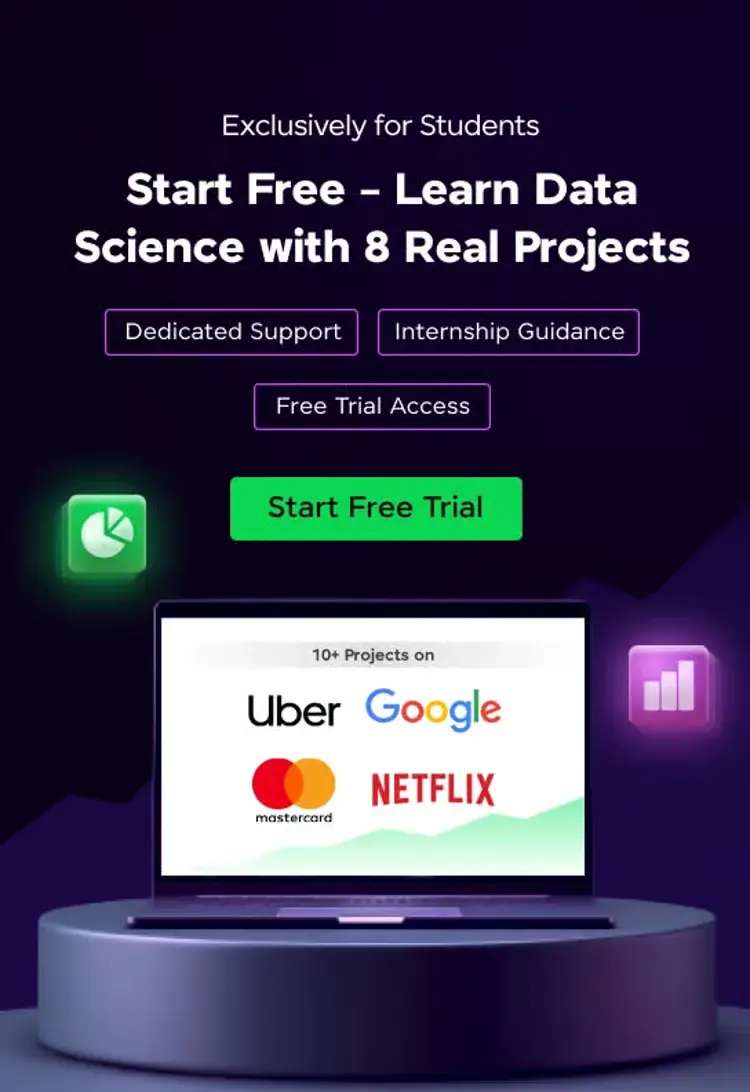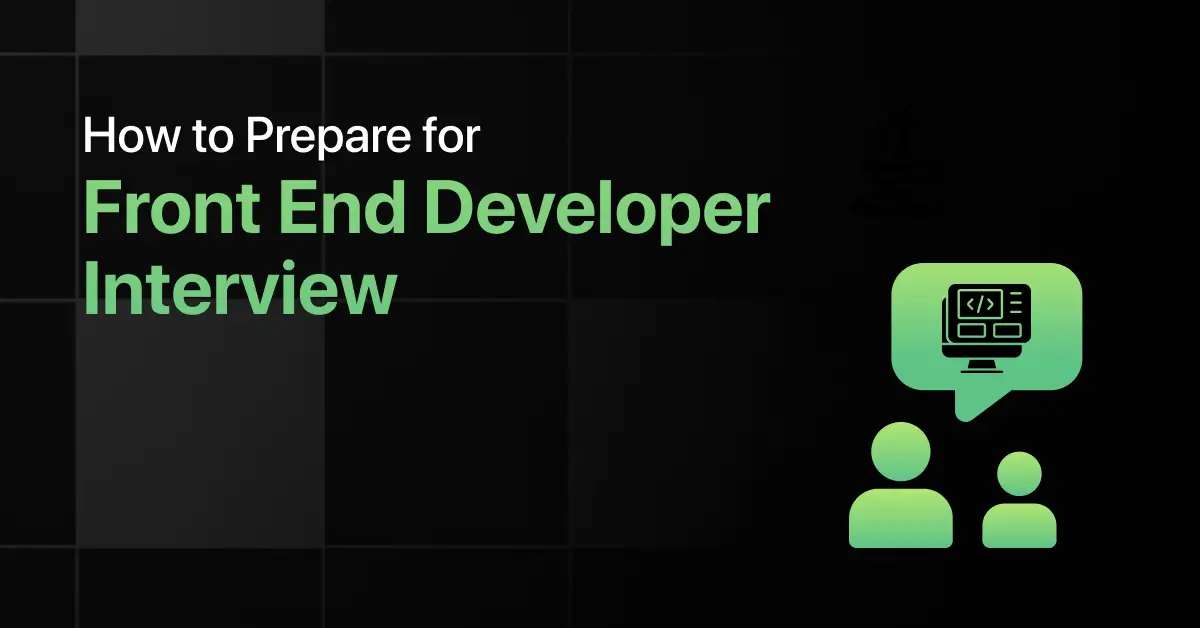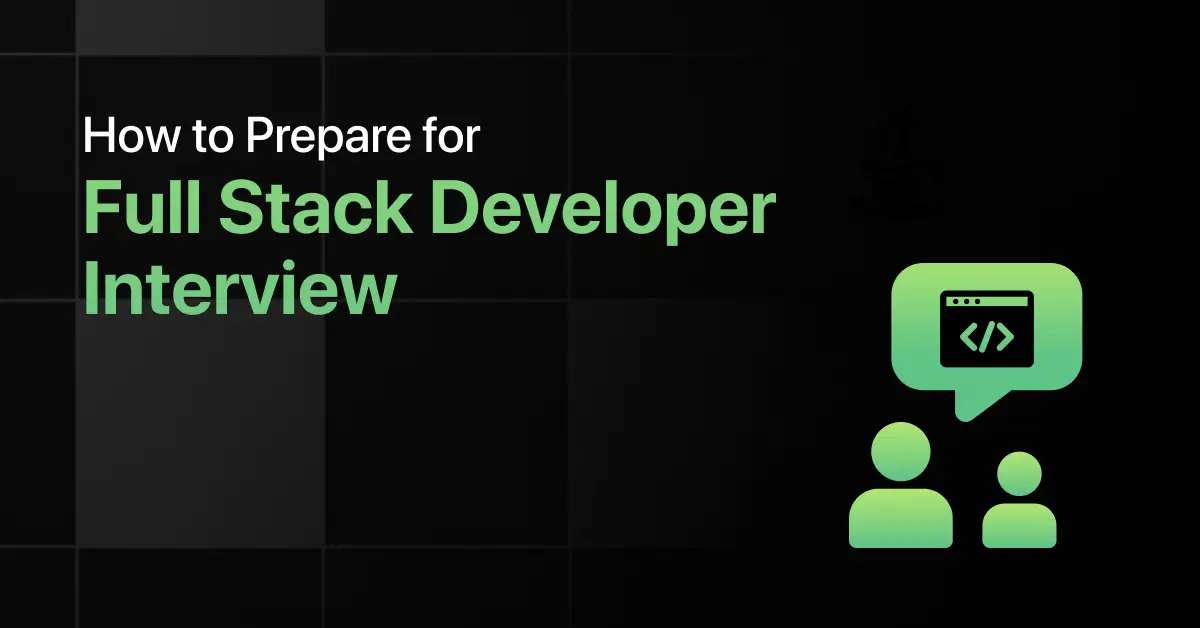Best NodeMCU Project Ideas for Beginners
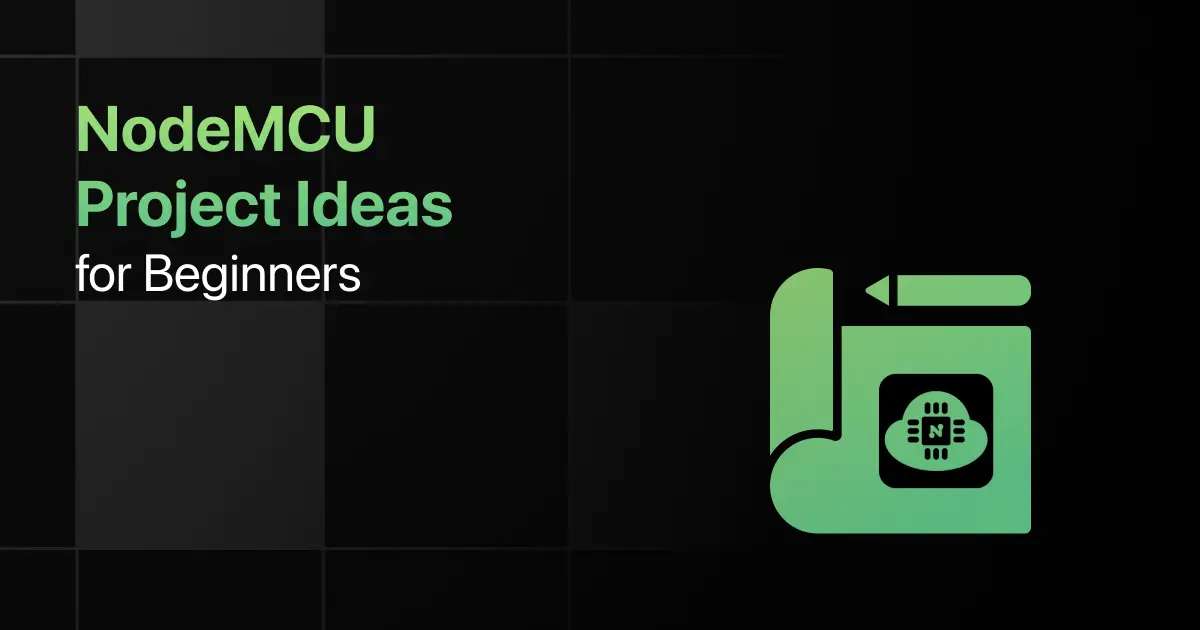
Are you a complete beginner excited to explore the world of IoT and electronics? Learning to build projects with NodeMCU will be a great starting point if you’re just stepping into the world of embedded systems and automation.
Here is a list of beginner-friendly NodeMCU project ideas that will help you understand IoT concepts, strengthen your development skills, and boost your tech profile.
10 Beginner-Friendly NodeMCU Project Ideas – Overview
Here’s an overview of the 10 best NodeMCU Project Ideas for beginners:
| S.No. | Project Title | Complexity | Estimated Time | Source Code |
|---|---|---|---|---|
| 1 | Wi-Fi Controlled LED | Easy | 1 hour | Get Started |
| 2 | Temperature Monitor using DHT11 | Easy | 2 hours | Get Started |
| 3 | Wi-Fi Door Status Notifier | Easy | 2 hours | Get Started |
| 4 | Blynk-Based LED Control | Easy | 3 hours | Get Started |
| 5 | Digital Clock with NTP Time | Easy | 3 hours | Get Started |
| 6 | IoT Weather Station | Hard | 6 hours | Get Started |
| 7 | Home Automation System | Hard | 7 hours | Get Started |
| 8 | Smart Plant Monitoring System | Medium | 7 hours | Get Started |
| 9 | Motion Detection Alarm | Medium | 9 hours | Get Started |
| 10 | Wi-Fi Signal Strength Meter | Medium | 9 hours | Get Started |
Top 10 NodeMCU Project Ideas for Beginners
Below are the top 10 simple NodeMCU Project Ideas for Beginners
1. Wi-Fi Controlled LED
This is one of the NodeMCU-based projects that allows you to control an LED remotely through a web interface using NodeMCU and Wi-Fi.
You will learn how to set up a local web server on NodeMCU and control hardware using HTTP requests.
Duration: 1 hour
Project Complexity: Easy
Key Concepts Covered:
- GPIO control
- Local web server
- HTTP request handling
Implementation Steps:
- Connect an LED to a digital pin on NodeMCU.
- Set up the Arduino IDE with ESP8266 board support.
- Write code to create a web server on NodeMCU.
- Add HTML buttons to toggle the LED on/off.
- Upload and test the project via browser.
Required Pre-requisites:
- Basics of Arduino programming
- Familiarity with NodeMCU/ESP8266
- Understanding of HTML and HTTP basics
Resources Required:
- NodeMCU (ESP8266)
- LED & resistor
- Breadboard and jumper wires
- Arduino IDE
Real-World Application:
- Smart home lighting systems
- IoT-based device control via smartphones or browsers
2. Temperature Monitor using DHT11
This is one of the simple NodeMCU project ideas that reads temperature and humidity data from a DHT11 sensor and displays it on a web page using NodeMCU.
You will learn how to interface sensors with NodeMCU and serve dynamic sensor data over a web interface.
Duration: 2 hours
Project Complexity: Easy
Key Concepts Covered:
- Sensor integration
- Web-based data display
- Data reading via digital pins
Implementation Steps:
- Connect the DHT11 sensor to NodeMCU.
- Install the DHT sensor library in the Arduino IDE.
- Write code to read sensor data and host it via a web server.
- Format data as HTML for display.
- Upload code and view sensor data in the browser.
Required Pre-requisites:
- Understanding of digital sensors
- Basic HTML knowledge
- Familiarity with Arduino IDE
Resources Required:
- NodeMCU (ESP8266)
- DHT11 temperature-humidity sensor
- Breadboard and jumper wires
- Arduino IDE
Real-World Application:
- Indoor air quality monitoring
- Smart agriculture or greenhouse monitoring systems
3. Wi-Fi Door Status Notifier
This project detects door open/close status using a magnetic reed switch and sends the information over Wi-Fi.
You will learn how to interface digital input sensors with NodeMCU and update real-time data on a web interface.
Duration: 2 hours
Project Complexity: Easy
Key Concepts Covered:
- Digital sensor input
- Real-time status update
- Web interface for monitoring
Implementation Steps:
- Connect the reed switch to a digital pin on NodeMCU.
- Write code to detect the door’s open/closed state.
- Create a simple web server to show the door status.
- Display live door status on the webpage.
- Test by simulating door movement.
Required Pre-requisites:
- Basic understanding of GPIO input
- Familiarity with web server setup on NodeMCU
- Basic electronics wiring
Resources Required:
- NodeMCU (ESP8266)
- Magnetic reed switch
- Resistor, breadboard, jumper wires
- Arduino IDE
Real-World Application:
- Home security systems
- Remote monitoring of access points
4. Blynk-Based LED Contro
This is one of the NodeMCU mini projects that allows you to control an LED connected to NodeMCU using the Blynk mobile application over the internet.
You will learn to integrate NodeMCU with a cloud IoT platform and handle real-time device control via mobile apps.
Duration: 2–3 hours
Project Complexity: Easy
Key Concepts Covered:
- IoT mobile app integration
- Cloud-based GPIO control
- Real-time device communication
Implementation Steps:
- Set up a Blynk account and create a new project.
- Connect an LED to a digital pin on NodeMCU.
- Write Arduino code using the Blynk library and auth token.
- Upload code and connect NodeMCU to Wi-Fi.
- Use the Blynk app to toggle the LED on/off.
Required Pre-requisites:
- Understanding of GPIO outputs
- Basic Blynk app usage
- Familiarity with Arduino IDE
Resources Required:
- NodeMCU (ESP8266)
- LED & resistor
- Smartphone with Blynk app
- Arduino IDE and USB cable
Real-World Application:
- Remote home automation systems
- IoT-based control panels for appliances
5. Digital Clock with NTP Time
This project displays the real-time clock on an OLED or serial monitor by fetching time from an NTP server over Wi-Fi.
You will learn how to work with time synchronization using network protocols and display formatted data in embedded systems.
Duration: 3 hours
Project Complexity: Easy
Key Concepts Covered:
- NTP time synchronization
- Real-time data display
- Wi-Fi communication
Implementation Steps:
- Connect NodeMCU to Wi-Fi and set up the NTP client library.
- Write code to fetch the current time from the NTP server.
- Parse and format the received timestamp.
- Display the time on an OLED screen or serial monitor.
- Update the display periodically.
Required Pre-requisites:
- Basic knowledge of time/date formats
- Familiarity with libraries in the Arduino IDE
- Understanding of I2C communication (for OLED)
Resources Required:
- NodeMCU (ESP8266)
- OLED display (optional)
- Jumper wires
- Arduino IDE with NTP and display libraries
Real-World Application:
- Time-synced IoT systems
- Smart clocks or scheduling devices
6. IoT Weather Station
This project measures environmental data like temperature, humidity, and pressure using sensors and uploads it to a cloud platform for remote monitoring.
You will learn to collect, process, and visualize real-time sensor data using IoT and cloud integration techniques.
Duration: 6 hours
Project Complexity: Hard
Key Concepts Covered:
- Sensor data acquisition
- Cloud data logging
- Real-time monitoring
Implementation Steps:
- Connect temperature, humidity, and pressure sensors (e.g., DHT11, BMP180) to NodeMCU.
- Write code to read sensor data periodically.
- Use Wi-Fi to send data to a cloud platform (like ThingSpeak).
- Format and publish the data in a readable form.
- Visualize the data in the cloud dashboard.
Required Pre-requisites:
- Understanding of sensor interfacing
- Familiarity with IoT cloud platforms
- Experience with Wi-Fi data transmission
Resources Required:
- NodeMCU (ESP8266)
- DHT11/BMP180 sensors
- Breadboard and jumper wires
- Internet connection
- Arduino IDE with required libraries
Real-World Application:
- Remote weather monitoring stations
- Smart agriculture or greenhouse automation
7. Home Automation System
This project allows you to remotely control multiple home appliances using a web interface or mobile app via NodeMCU.
You will learn how to manage multiple GPIO devices, implement IoT protocols, and build scalable automation systems.
Duration: 7 hours
Project Complexity: Hard
Key Concepts Covered:
- Multi-device control
- IoT dashboard creation
- Web/Mobile-based automation
Implementation Steps:
- Connect relays to control different appliances via NodeMCU.
- Set up a web server or use platforms like Blynk/Home Assistant.
- Write code to toggle devices based on user input.
- Integrate with a mobile app or a browser interface.
- Test appliance control remotely.
Required Pre-requisites:
- Understanding of relays and GPIO output
- Experience with NodeMCU web servers or Blynk
- Basic knowledge of electrical appliances
Resources Required:
- NodeMCU (ESP8266)
- Relay module(s)
- Home appliances (bulb, fan, etc.)
- Jumper wires, breadboard
- Arduino IDE
Real-World Application:
- Smart home control systems
- Energy-efficient home automation solutions
8. Smart Plant Monitoring System
This project monitors soil moisture and automatically waters plants when necessary using a sensor and an automated water pump.
You will learn how to interface sensors, use actuators for automation, and create threshold-based control systems.
Duration: 7 hours
Project Complexity: Medium
Key Concepts Covered:
- Soil moisture sensing
- Actuator control (water pump)
- Threshold-based automation
Implementation Steps:
- Connect the soil moisture sensor to NodeMCU.
- Write code to read moisture levels and compare with a set threshold.
- Connect a relay module to control the water pump.
- Write automation logic to turn on/off the pump based on sensor data.
- Test the system by monitoring soil moisture and activating the pump.
Required Pre-requisites:
- Basic understanding of sensor and actuator interfacing
- Knowledge of relay module control
- Basic programming in Arduino IDE
Resources Required:
- NodeMCU (ESP8266)
- Soil moisture sensor
- Water pump and relay module
- Jumper wires and breadboard
- Arduino IDE
Real-World Application:
- Automated gardening and agriculture
- Indoor plant care systems
9. Motion Detection Alarm
This project uses a PIR (Passive Infrared) sensor to detect motion and trigger an alarm or alert system.
You will learn how to interface motion sensors with NodeMCU and implement simple alert mechanisms based on sensor input.
Duration: 8-9 hours
Project Complexity: Medium
Key Concepts Covered:
- PIR motion sensor interfacing
- Triggering an alarm or notification
- Event-based automation
Implementation Steps:
- Connect the PIR motion sensor to NodeMCU.
- Write code to detect motion through the PIR sensor.
- Use a buzzer or LED to alert when motion is detected.
- Optionally, add an alert notification via a web interface.
- Test the system by simulating motion detection.
Required Pre-requisites:
- Basic knowledge of motion sensors
- Familiarity with event-driven programming
- Understanding of Arduino IDE
Resources Required:
- NodeMCU (ESP8266)
- PIR motion sensor
- Buzzer or LED
- Jumper wires and breadboard
- Arduino IDE
Real-World Application:
- Home security systems
- Automated alerts for unexpected movement
10. Wi-Fi Signal Strength Meter
This project measures the Wi-Fi signal strength (RSSI) using NodeMCU and displays it on a web interface or an LED bar.
You will learn how to access Wi-Fi signal data and visualize it in real time using IoT technologies.
Duration: 9 hours
Project Complexity: Medium
Key Concepts Covered:
- Wi-Fi signal strength measurement
- Real-time data visualization
- Web server setup
Implementation Steps:
- Set up NodeMCU to connect to a Wi-Fi network.
- Write code to retrieve the Wi-Fi signal strength (RSSI).
- Display the signal strength on a web page or through an LED bar.
- Update the display in real-time based on signal changes.
- Test and optimize for different Wi-Fi signal conditions.
Required Pre-requisites:
- Basic knowledge of NodeMCU and Wi-Fi
- Familiarity with Arduino IDE
- Basic web development for display
Resources Required:
- NodeMCU (ESP8266)
- LED bar or web server
- Jumper wires
- Arduino IDE
Real-World Application:
- Wi-Fi signal optimization for home/office networks
- Tools for network troubleshooting and analysis
Final Words
NodeMCU projects for beginners are a great way to build hands-on experience in electronics and IoT while enhancing your problem-solving skills.
So, if you’re looking to dive into the world of embedded systems, starting with NodeMCU projects is a smart and rewarding decision!
Explore More Project Ideas
- Python
- Java
- C Programming
- HTML and CSS
- React
- JavaScript
- PHP
- C++
- DBMS
- SQL
- Excel
- Angular
- Node JS
- DSA
- Django
- Power BI
- R Programming
- Operating System
- MongoDB
- React Native
- Golang
- Matlab
- Tableau
- .Net
- Bootstrap
- C#
- Next JS
- Kotlin
- jQuery
- React Redux
- Rust
- Shell Scripting
- Vue JS
- TypeScript
- Swift
- Perl
- Scala
- Figma
- RPA
- UI/UX
- Automation Testing
- Blockchain
- Cloud Computing
- DevOps
- Selenium
- Internet of Things
- Web Development
- Data Science
- Android
- Data Analytics
- Front-End
- Back End
- MERN Stack
- Big Data
- Data Engineering
- Full Stack
- MEAN Stack
- Artificial Intelligence
- Machine Learning
- Arduino
- Cyber Security
- Raspberry Pi
- Spring Boot
- NLP
- Embedded Systems
- Computer Network
- Game Development
- Flask
- Data Visualization
- Ethical Hacking
- Computer Vision
- AWS
- Data Mining
- Azure
- Network Security
- Microservices
- Augmented Reality
- Bioinformatics
- Virtual Reality
- Text Mining
- Unity
- Kubernetes
- Unreal Engine
- Terraform
- Linux
- Chatbot
- Deep Learning
- API
- Cloud Security
- Home Automation
- Quantum Computing
- FinTech
- Sentiment Analysis
- Recommendation System
- Robotics
- Large Language Models
FAQs
Some easy NodeMCU projects include a Wi-Fi-controlled LED, a temperature and humidity monitor, and a motion detector alarm
NodeMCU projects help beginners apply their theoretical knowledge in practical ways
Beginners can learn circuit design, basic C/C++ programming, IoT communication (like MQTT or HTTP), and sensor integration.
A Wi-Fi-enabled LED control project using a simple web interface is recommended for someone with no prior programming experience.
A basic NodeMCU project usually takes 2 to 5 hours to complete. This includes setup, coding, testing, and troubleshooting, depending on complexity and familiarity.
Related Posts
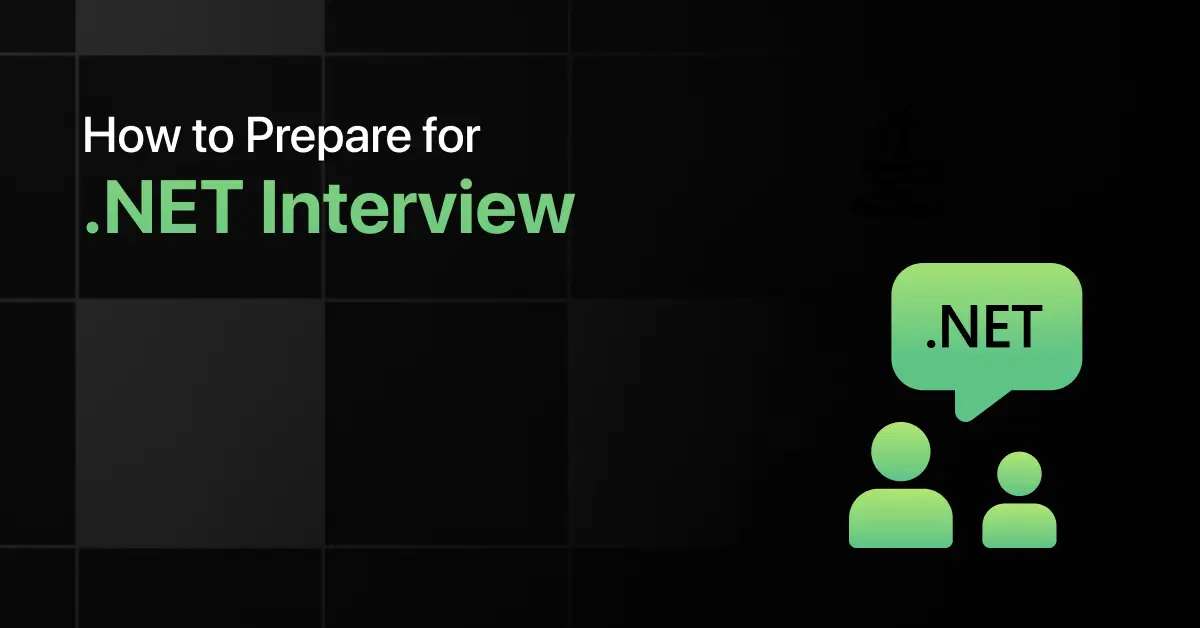

How to Prepare for .Net Interview
Are you preparing for a .NET interview but not sure which topics to prioritize? Many candidates struggle to balance C# fundamentals, …
Warning: Undefined variable $post_id in /var/www/wordpress/wp-content/themes/placementpreparation/template-parts/popup-zenlite.php on line 1050


